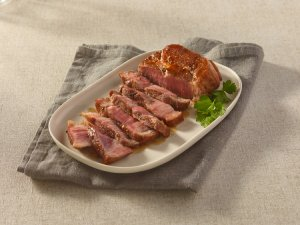Many misconceptions about pork still persist. Yet this meat has so much to offer: it's versatile, protein-packed, and can be served well done or slightly pink. To separate fact from fiction, we've taken a closer look at a few common myths about this delicious meat.
Pork is bad for your health
False
Pork is actually a great ally for a balanced diet. It's rich in protein and essential nutrients, especially zinc and B vitamins—often in higher amounts than other meats. Certain cuts like tenderloins and loins are also naturally lean and low in fat.
Pork is only for Sunday roast
False
On the contrary, there are so many creative ways to cook pork: grilled, braised, stir-fried, skewered, and more. In summer, we even recommend hearty, vitamin-packed salads
Pork is hard to cook
False
Out of caution, some people think pork must be cooked until it's dry. But that overcooked approach is outdated — pork can safely be served slightly pink. We recommend an internal temperature of 71°C (160°F) for ground pork and 63°C (145°F) for whole cuts. That means pork can be juicy, tender, and pink in the center—while still safe to eat. Try it and taste the difference!
Pork pairs well with all kinds of flavors
True
With a wide variety of cuts available, pork blends beautifully with a vast range of flavors and textures. From Mediterranean to Tex-Mex to Asian dishes, the only limit is your imagination. With pork, every meal becomes a new culinary adventure.
Pork is old-fashioned
False
Did you know that Olymel recently launched new pork cuts? We've introduced several easy-to-cook, flavorful, and versatile cuts. Ever heard of the pork T-Bone, pork flank steak, or pork capicola steak?




